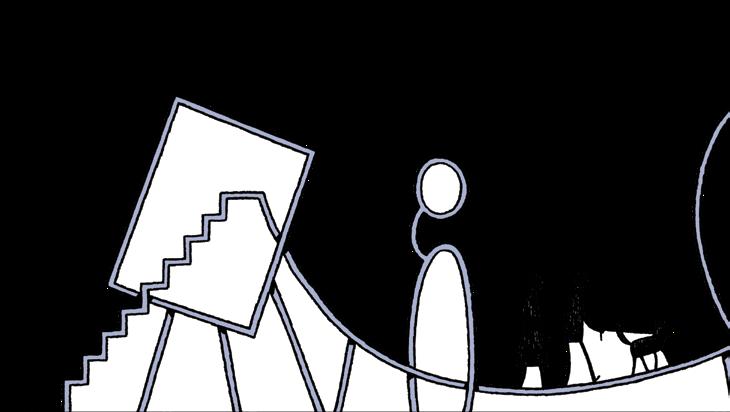History
What a carve-up!
Why do historians love slicing history into 100 pieces? david horspool The luxuriantly coiffed Scottish TV historian-archaeologist Neil Oliver is a man of mystery. How does he keep that barnet so clean in the salty, muddy, windswept environments he favours? What does he store in that satchel he always carries? What possessed him to join Andrew Neil’s Fox TV Mini-Me, GB News? His latest book, The Story of the World in 100 Moments, prompts another question. When did we start dividing history up like this, as if the past was a sort of hit parade? What will be Number One? 9/11? COVID-19? The prime suspect is Oliver’s fellow Scot the former director of the British Museum Neil MacGregor. A glance at the British Library catalogue confirms that, before MacGregor published his A History of the World in 100 Objects as a companion to the Radio 4 series, this was not a popular formula. Before MacGregor, you find only two titles: A Metrical History of New South Wales: 100 years in 100 verses (1888), which doesn’t really fit the bill; and the true ancestor, George Hecht’s 1919 book, subtitled A History of the War in 100 Cartoons. Post-MacGregor, there are another 65 titles in the catalogue using the formula. They extend from the narrow – A History of Dumfries and Galloway in 100 Documents – to the all-encompassing A History of the Universe in 100 Objects (both 2012). So is this really just a 21st-century phenomenon? Well, it’s certainly true that publishers like a sure thing. We can put much of the trend down to market forces, or a desperate attempt to sex up rather dry material. A History of the Music of Bristol Cathedral in 100 Objects, anyone? But, faced with the vastness of history, historians have always had to chop it up. One of the first was the 6th-century Scythian monk Dionysius Exiguus (Humble Dionysius), who came up with
Tale of the century: Neil Oliver
the distinction between BC and AD. In his time, dating in the West was still done by Roman consular year. It was a few centuries before his idea was widely adopted, and it has faced secular opposition more recently. Hence the introduction of BCE, Before the Common Era, which just happens to begin at the traditional year of the birth of Christ. But, for sheer impact, Dionysius’s historical division puts MacGregor in the shade. Not every historian chops in the same way. J H Hexter, American historian of Britain’s Tudors and Stuarts, made a distinction between ‘lumpers’ and ‘splitters’. All historians have to make generalisations, and all historians have to give specific examples. But some, Hexter argued, are more inclined to yoke things together (the lumpers), while others prefer to point out the differences between them (the splitters). Marxist historians, Hexter thought, liked to draw as much as possible into
A 6th-century monk came up with the distinction between BC and AD
their theory of historical materialism. They were lumpers par excellence. While their theories could explain a lot about the past, they couldn’t really cope with individual agency, the importance of thought, or the sheer variety of past experience. Though the heyday of Marxism has passed, it would be wrong to say we’re all splitters now. Splitting appeals to the general, non-academic reader. We like our history manageable and are drawn to individual stories – even if they’re about objects, not individuals – and are less excited by theories. But not all of us, and certainly not so many among Continental readers of history. The popular version of lumping sees history through a single lens, or offers a solitary key: cod, perhaps, or work, or the Winchester repeating rifle. In France, and then worldwide, one of the bestselling history books of recent years has been the economic historian Thomas Piketty’s Capitalism in the Twenty-First Century. Despite its title, it updated Marx by looking at economic inequality from the 18th century to our own: the last word in lumping. Piketty, unlike MacGregor, has not spawned many imitators. That may be to do not with history – but with art. Poets have (nearly) always thrived on the artificial constraints of their practice, from the 14-line sonnet to the 17-syllable haiku. Perhaps the real progenitor of MacGregor and co is not a history book, but the poet Wallace Stevens’s Thirteen Ways of Looking at a Blackbird (1954). In choosing to divide history up, historians have brought it a step closer to poetry. That may not please the lumpers, but it’s hard to argue with the sales. Neil Oliver’s The Story of the World in 100 Moments (Penguin) is out on 16th September The Oldie September 2021 63






































